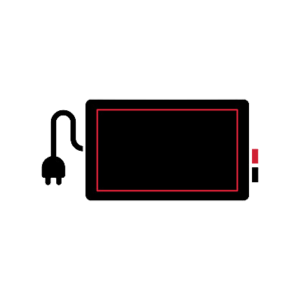2. HAZARDS IDENTIFICATION
EMERGENCY OVERVIEW: This product is a Lithium Iron Phosphate Battery with certified compliance under the UN Manual of Tests and Criteria, Part III, sub-section 38.3. The information below is for repeated and prolonged contact in an occupational setting. It is not likely to apply to normal product use. However, this Safety Data Sheet (SDS) contains valuable information critical to the safe handling and proper use of this product. This SDS should be retained and available for employees and other users of this product. Always be aware of the risk of fire, explosion, or burns. Do not short circuit the (+) and (-) terminals with any other metals. Do not disassemble or modify the battery. Do not solder a battery directly. Keep away from fire or open flame.
Appearance Battery
Physical State Solid
Odor Non
Classification
Based on 29 CFR 1910.1200, these products meet the definition of an “article” and they are not subject to the hazards normally associated with the individual components when used as intended.
4. FIRST-AID MEASURES
First Aid Measures
General Advice: Provide this SDS to medical personnel for treatment.
Eye Contact: Rinse thoroughly with plenty of water for at least 15 minutes, lifting lower and upper eyelids. Consult a physician.
Skin Contact: Wash off immediately with plenty of water for at least 15 minutes.
Inhalation: Remove to fresh air.
Ingestion: Clean mouth with water and drink afterwards plenty of water.
Most Important Symptoms and Effects
Symptoms: Based on physical state of the product, accidental exposure is unlikely.
Indication of Any Immediate Medical Attention and Special Treatment Needed
Notes to Physician: Treat symptomatically.
6. ACCIDENTAL RELEASE MEASURES
Personal Precautions, Protective Equipment and Emergency Procedures
Personal Precautions: Use personal protective equipment as required.
Other Information: ELIMINATE all ignition sources (no smoking, flares, sparks or flames in immediate area).
For Emergency Responders: Keep unnecessary and unprotected personnel from entering.
Environmental Precautions: See Section 12 for additional Ecological Information
Methods and Material for Containment and Cleaning Up
Methods for Containment: Prevent further leakage or spillage if safe to do so. Do not release runoff from fire control methods to sewers or waterways.
Methods for Clean Up: Ground and bond containers when transferring material. Sweep up and shovel into suitable containers for disposal. For waste disposal, see section 13 of the SDS.
8. EXPOSURE CONTROLS/PERSONAL PROTECTION
Exposure Guidelines
This product presents no health hazards to the user when used according to label directions for its intended purposes
Appropriate Engineering Controls
Engineering Controls: Apply technical measures to comply with the occupational exposure limits.
Individual Protection Measures, Such as Personal Protective Equipment
Eye/Face Protection: Refer to 29 CFR 1910.133 for eye and face protection regulations.
Skin and Body Protection: Refer to 29 CFR 1910.138 for appropriate skin and body protection.
Respiratory Protection: Refer to 29 CFR 1910.134 for respiratory protection requirements.
General Hygiene Considerations: Handle in accordance with good industrial hygiene and safety practice. Do not eat, drink or smoke when using this product.
10. STABILITY AND REACTIVITY
Reactivity
If battery assembly is damaged, contents may release flammable vapors.
Chemical Stability
Stable under recommended storage conditions
Possibility of Hazardous Reactions
If battery assembly is damaged, contents may release flammable vapors.
Hazardous Polymerization: Hazardous polymerization does not occur.
Conditions to Avoid
Keep away from heat, sparks and open flame.
Incompatible Materials
None known based on information supplied.
Hazardous Decomposition Products
Fire will produce irritating, corrosive and/or toxic gases
12. ECOLOGICAL INFORMATION
Ecotoxicity
The product is not classified as environmentally hazardous. However, this does not exclude the possibility that large or frequent spills can have a harmful or damaging effect on the environment.
Persistence/Degradability
Not determined.
Bioaccumulation
Not determined.
Mobility
Not determined
Other Adverse Effects
Not determined
14. TRANSPORT INFORMATION
Canbat CLI series batteries are designed to comply with all applicable shipping regulations as prescribed by industry and legal standards which includes compliance with the UN Recommendations on the Transport of Dangerous Goods; IATA Dangerous Goods Regulations and applicable U.S. DOT regulations for the safe transport of lithium-ion batteries and the International Maritime Dangerous Goods Code. This battery has passed the UN Manual of Tests and Criteria Part Ill Subsection 38.3, which is required by all of the directives listed above.
International shipments of CLI series lithium phosphate batteries are classified as Class 9, UN3480, Packing Group II, by the International Civil Aviation Organization (ICAO) and the International Maritime Dangerous Goods (IMDG) Code. Packaging, markings and documentation requirements are defined in the International Air Transport Association (IATA) Dangerous Goods Regulations (DGR) Packing Instructions 965 and Packing Instruction P903 of the IMDG Code.
Lithium battery transportation is conducted in accordance with instructions provided by the Government of Canada: https://www.tc.gc.ca/eng/tdg/transporting-batteries.html
DO YOU HAVE ANY QUESTIONS ABOUT THE MSDS?
Whether you have a question about the material safety data sheet (MSDS) or whether you are looking for other information, please feel free to complete the form below to contact our battery experts. We would love to hear from you and we look forward to your enquiry.










